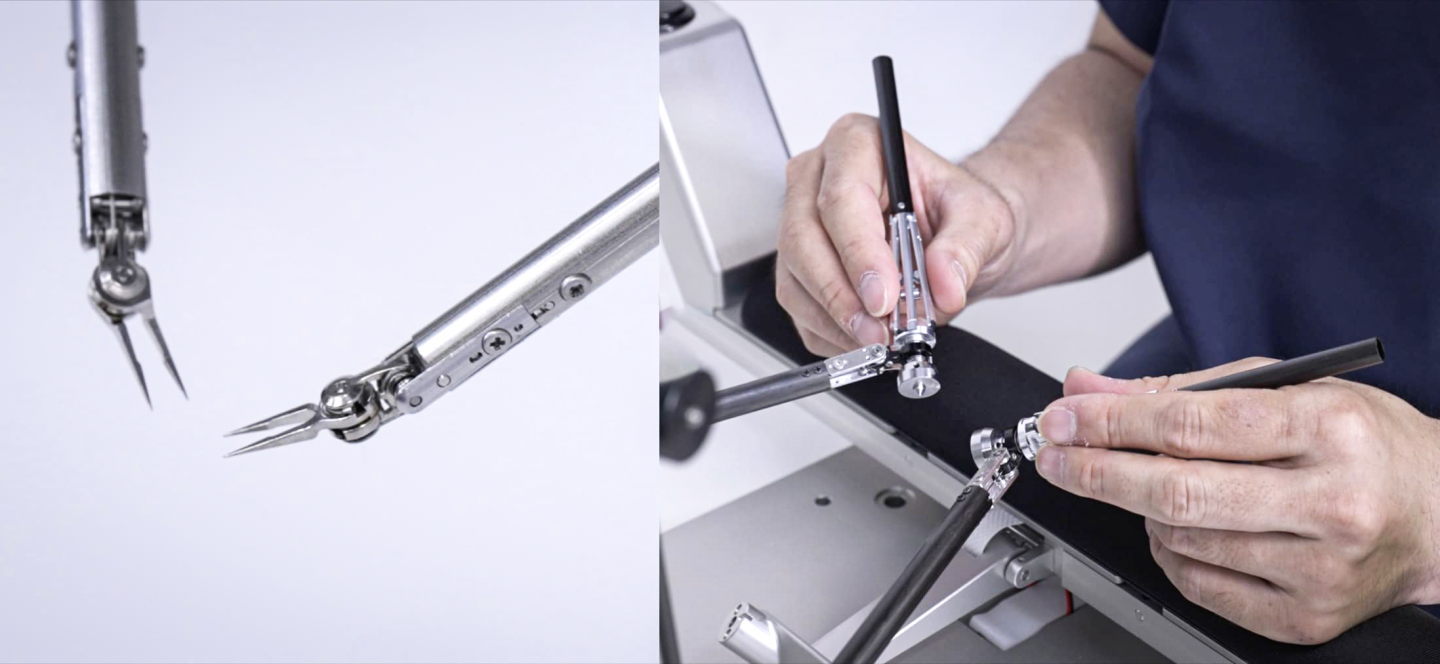Sony has unveiled a new surgical robot that performs the ultra-precise task of sewing tiny gaps in corn kernels. This is the first machine to automatically switch between different tools and has been successfully tested in animal surgery.
The product is designed to benefit the field of supermicrosurgery, a highly specialized field in which surgeons operate on extremely small blood vessels and nerves less than 1 mm (0.04 inches) in diameter. As you can imagine, this kind of work requires an incredibly steady hand, and experts in this field often do the entire work under a microscope.
So this is an ideal place for some robotic support, and there are a number of surgical robots already in clinical use from companies like Intuitive Surgical, Stryker, and others. We’re not talking about fully autonomous AI-based robotic surgeons here, but rather teleoperated tools that allow surgeons to magnify their vision while reducing hand movements.
Essentially, this could completely remove the prerequisite that a super microsurgeon must be a freak of nature, a physically gifted human being with extraordinary control over fine hand and finger coordination. A good surgical robot will allow a much larger number of people to perform this tiny amount of work using larger movements and much more shaky hands.
Microsurgical support robot that sews corn kernels | sony group
Sony’s camera and TV expertise provides an edge when it comes to precision imaging. The robot, currently in prototype form, is a low-latency remote surgery device that allows surgeons to use a pair of pressure-sensitive pen-like controllers and observe the actual effects via a small stereoscopic 4K 3D camera system. It provides real-time vision through a pair of OLED screens, equivalent to a set of strapless, desk-mounted VR goggles that the surgeon rests his face on.
While some of these devices rely on ‘motion scaling’ (the ability to move between coarse and fine motions by zooming in and out on the size of the motion), Sony offers small, lightweight controls that allow surgeons to perform high-precision tasks like pulling out a needle. They say it can be done. It moves into smaller blood vessels while handling larger movements, like pulling a string, without having to change scale.

sony
Just as a surgical assistant must stand nearby to hand tools to a doctor, this robot has the unique ability to automatically switch between multiple tools. Quickly move specific arms to a small caddy on demand and switch tools to get back to the job site in less than 10 seconds, minimizing disruption to the job.
At least the surgeons quoted in Sony’s marketing materials appear to have been impressed. In the video below, Dr. Hisako Hara says, “I was able to operate this robot with the same sense of handling forceps and scissors as in general surgery.”
“If remote work is delayed or the robot moves differently from my hand movements, it leaves a negative impression,” says Dr. Makoto Mihara. “But this robot moves the way I want. It feels like the robot has assimilated me into a robot that moves like my fingertips… I think this robot’s abilities are very outstanding.”
Microsurgery assistant robot | Expert Voice – Dr. Hisako Hara
The prototype was tested at Achi Medical University (AMU) in Fenruary, where it demonstrated its ability to provide super microsurgery to non-superhumans. Both doctors and “non-microsurgery medical staff” were able to perform anastomoses, which create a surgical connection between two tubes in an animal’s blood vessel about 0.6 mm (0.02 inches) in diameter.
“Even experienced doctors require months to years of extensive training to master this technique,” says AMU Professor Munekazu Naito. “In this collaborative study, Sony’s surgical assistance robotic technology was tested to evaluate its ability to enhance the skills of novice microsurgeons. The results are that it provides superior control of the movements of inexperienced surgeons, enabling them to perform complex and delicate tasks with proficiency. They are seasoned experts who have shown that they can do it.”
Sony said it will continue R&D work to improve the machine and verify its effectiveness, and ultimately hopes to “contribute to the advancement of medicine by providing robotic technology.”
Source: Sony
